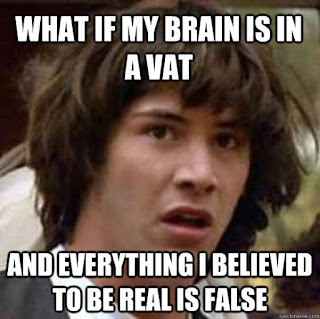For this week I wanted to look at what I think I want my paper to be. I was very interested in the virtual reality and emotional manipulation sections. I wanted to write on the possibilities of literature if applied to a virtual realm as well as the minds cognitive/ToM effects resulting. Primarily my paper is going to involve my in-class presentation and a mix of readings from the emotion-literature and VR weeks. I have a possible Thesis below but it is very rough looking and Still needs a little clarification or a small restructuring. Basically I want to dissect the character of Christopher in order to exhibit the humanity from his inhumanity and relate this to artificial intelligence/robots/computers and how our cognitive functioning both is changed or mirrored similar to our functioning with other "normal" human individuals. This will help draw parallels with literature and the Theory of Mind involved, but also can help show the possibility of the future of literature. Another problem that could be possibly tackled is the problem of transitioning literature into VR (I don't know if I will do this) because of the variability of experience based on the placement of the user. If they are simulating the protagonist, their view on the story is completely different from if they were a third party member because of the separation between the characters experience and the outsider's mindset. A different problem is determining what changes in cognition will bleed through to the real world. Finally by changing to a visual platform, it changes the amount of imagination and creative thinking but enhances the reality and physicality of the storyline.
Possible Thesis:
The
view of the mind being a viewing platform is one that is tackled in a couple of works,
most importantly the Curious Incident. It is through this novel that Attention
and reflection are handled in a way that produces a dichotomy between human and
computer. However with increasing virtual reality tests and studies it is clear
that computers may be able to mimic emotion and become humanized. It is possible that
techniques of theory of mind may be able to be applied to these computer
characters in order to effect real world outcomes just as literature and other
arts do.






